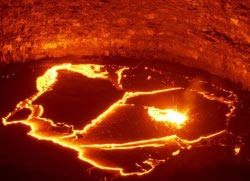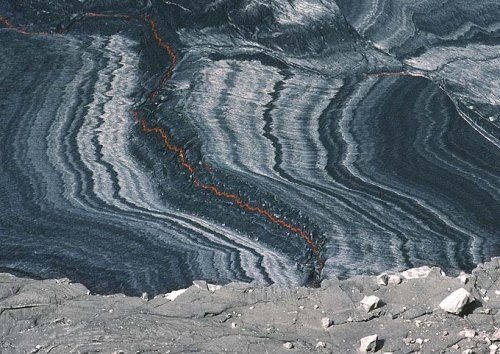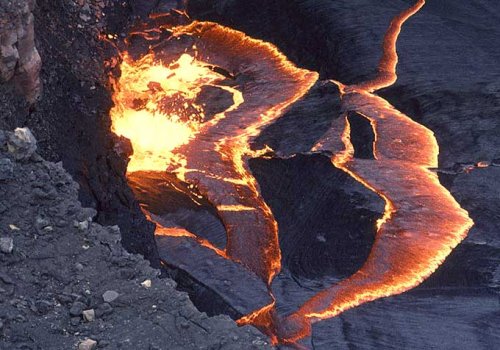As cool geo-imagery has poured in for the upcoming Accretionary Wedge*, I have been pondering what I should throw into the collective album. Eventually, I decided that when it comes to dramatic imagery that ties into my geological interests (albeit somewhat obliquely), you can’t beat a lava lake.

The Erta Ale lava lake, Ethiopia. Source
A vat of bubbling molten lava seems more like something from a bad disaster movie than real life, but sometimes there is the right balance between vent shape and eruption rate for a lava lake to form. The one shown above is found in the crater of Erta Ale, a basaltic shield volcano found in the Afar rift region of Ethiopia. What is really cool about this picture is what is going on at the lake surface. The uppermost layer of lava has cooled and solidified, forming a thin crust on top of the molten lava beneath. This surface rind has the same composition, but different mechanical properties, than the fluid it covers, much like ice on a winter lake. The churning of the convecting lava beneath has broken apart this crust into a number of different slabs; in the picture above, the boundaries are marked by the lines of bright molten lava, creating a dramatic natural jigsaw puzzle. The same convection currents jostle the slabs against each other, moving them apart in some places, with new upwelling lava cooling and solidifying in the gap, and in other places pushing them back into the depths of the lake to be remelted.
Although you should all know by now that the Earth’s mantle is not molten, it is divided mechanically in the same way as the Erte Ale lava lake. The upper mantle forms the colder, stronger, lithosphere, rigid enough to hold its shape; the lower mantle forms the warmer, weaker, asthenosphere. Convection currents in the asthenosphere move heat from the Earth’s interior towards the surface, and in the process also drive the motion of the overlying lithospheric plates. So the Erta Ale lava lake is in fact a fabulous natural analogue for plate tectonics, and because in this case the convecting medium is molten, moving at centimetres per second rather than centimeters per year, we can see processes that take tens of miliions of years on a global scale happening in just a few hours. It’s quite compelling to watch.
*it’s my carnival and I’ll submit after the deadline if I want to.





Comments (8)